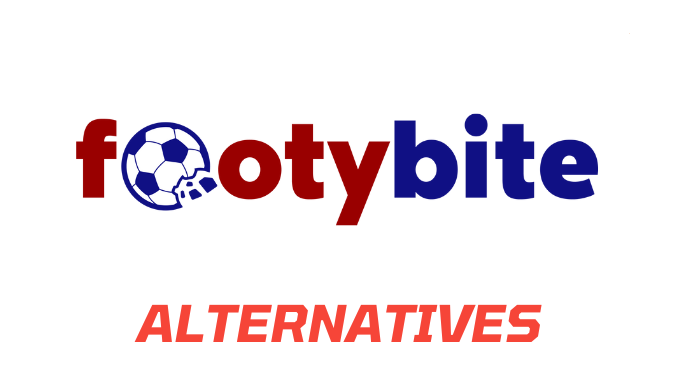A brief behind-the-scenes look reveals that I have been working on this list since April 1, 2021, gradually adding items and changing the list as I prioritised certain candidates and brought others to the table. To be quite honest, I’m glad I held off on publishing it for this long. because I was really into train games when I first started. But now I’ve fallen down the rabbit hole of the train game. Looking at all of my plays for 2022, train games make up 53% of them (thanks to the Dads on a Map group for the assistance).
The majority of the train games I’m going to discuss have fewer than 10,000 owned copies listed on BoardGameGeek, indicating that train gaming is still a somewhat niche genre. The definition of a rail game is also a topic of discussion. Most people would classify any game with a train theme as a train game; some well-known examples of train-themed games are Russian Railways, Railroad Ink, and Ticket to Ride.
More knowledgeable people in the field might argue that rail games need to have some shared incentives in order to qualify. In other words, if a player does something other than block, would they gain or lose from that choice? One way to do this would be through the payouts that many economic games offer. Both Player A and Player B profit from a dividend payout if they have invested in the same company. Additionally, Player A may decide they no longer wish to contribute positively to that organization, which would be detrimental to Player B. This is a crucial component of almost every game on my list.
A few asterisks need to be mentioned. Not all of my favorite games have been released, but the ones I have listed are only published. First off, check out the amazing two-player Streetcar Suburb created by Drew Edwards. Drew’s game, which includes some elements of city planning, addresses the void left by the rarity of rail games that are recommended at two. On the unpublished side, The Old Prince 1871 is also worth noticing. It has so many interesting advances that a paragraph or two would be required to list them all. You may test it out on 18xx.games.
Okay, enough of the introduction. Seize your tickets, bide your time till the horn sounds, and relish the spectacle.
The Top 10 Board Games for Trains
10. On the Underground: London/Berlin

Within the SubwayI was startled by this one. Even though On the Underground was reprinted in 2019, I hadn’t really given it much thought. While certain aspects of the game are comparable to others, it accomplishes several things that are distinct. Its route building is comparable to that of Splotter’s Bus in that, after the first piece is in place, you are unable to extend your line from either end. The main feature that sets it apart from almost all other train games is the ability to construct several underground lines that can be used alone, in conjunction with other colours, or even in opposition to the routes of your opponents. While pick up and deliver is a frequent theme in train games, On the Underground has a lowly passenger who would stop at nothing to avoid switching lines and avoid having to walk to their destination. Points can also be obtained simply by building tracks onto specific icons that are printed on the board. The Underground creates the ranking by feeling unique from the rest of the group. It’s a route management game, which is entertaining in and of itself, rather than an economic game.
9. Trick of the Rails

A Trick with the RailsThe fundamental feature that distinguishes Trick of the Rails from other games is evident in its name: trick taking. Talk about the strangest game on the list. In actuality, it shouldn’t be effective for trick-taking enthusiasts or train gamers. Trick of the Rails, however, makes your play extremely crucial even if you don’t win the trick. Similar to 18xx games, you switch between track laying and stock acquiring, with trick taking serving as the foundation for each. In stock rounds, players who win a trick take a card from the trick lane—a line of cards that serves as a timer and advances them through each round—as a share, and those who lose add their played card as a share as well. While the other players add their played cards to the line of their respective colour firms, the winner of the trick adds a city or locomotive to any company (cities being a big source of points). The peculiar combination is so effective because each card play affects the growth of businesses or the acquisition of a stake in the most valuable railway. It’s among the trickiest games I’ve ever played, in my opinion.
8. Northern Pacific

The Northern PacificI’m surprised by this one. The idea is so simple, and the main attraction is its focus on transient alliances. You can extend the train or place a small or large investment cube in a city throughout a turn. All players with cube colours in that city receive a “payout” of their cubes from the supply when the train arrives at a city with cubes (one for tiny cubes, two for giant cubes) A player’s score is the number of cubes they have in front of them at the end of the game, which concludes when the train reaches Seattle. The player with the most points after three rounds wins. Here’s the depth, though. Moves are similar to other good train games in that you partner up with another player and place your cube in the same city as theirs. They move their cube inside your city during their next round, and you give each other high fives. So what happens if a player gets in the way of you and your “partner”? Are they going to join you in your fun? Will your cubes remain on the board, or will they take their turn to send the train in the opposite direction? Even though they are small decisions, they are in the greatest ways tremendously enjoyable and annoyingly nasty.
7. Stephenson’s Rocket

The Rocket of StephensonEven six months ago, if you had asked me what I thought of Reiner Knizia’s version of the train game, I would have told you it was terrible. However, after seeing it recently, my opinions have completely changed. Having saying that, it’s not the easiest play to teach or comprehend as first. Furthermore, the latest printing’s Ian O’Toole graphic design doesn’t aid with that. However, this is the classic “take two” approach from Knizia, albeit with a few rival strategies for scoring and a strong emphasis on combining train companies. Oh, and you can try to oppose a move made by someone in which you own shares by requesting a once-around auction. Additionally, you can simply alter the train’s direction of travel if you pay more than the active player. You will require at least one practice round to get the hang of it because it is very opaque. But once you get beyond the initial hurdle, it’s one worth investigating.
6. 1870: Railroading Across the Trans Mississippi from 1870

The Trans Mississippi Railroad Was Built Between 1870 and 1870I’ve already extolled the virtues of every game, so let me begin with a critique of 1870. It’s a lengthy game, and although I want to get a copy, I like to play async on 18xx.games. Having said that, it is a logical advancement from the game of the 1830s. It’s a lot of fun and interesting to plan around the private companies. Even though the board is large, it can create extremely impolite track laying that makes making money very challenging. Selling stock now carries a risk since price protection might give a president enormous financial gain. After playing a lot of 1830 and its variations, they are incredibly cool to explore. However, part of the reason it isn’t higher is because it is still quite long.
5. Age of Steam

The Steam AgeAge of Steams is one of the most extensible games ever created (apart from most collectible card games), with a very basic set of rules for the train genre. There is a predetermined number of rounds, and each round’s turns mostly follow the same format. The game’s mechanics allow players to auction off actions, build tracks alternately, deliver a maximum of two items at a time, and eventually make money or cover costs. The vast quantity of maps is where the game derives its variety. Certain modifications are slight and solely affect the location. Some modify some of the options for actions during the auction based on themes. Others, such as the Moon, Human Body, or Disco Inferno, completely alter the gameplay to the point where each iteration feels like a brand-new game.
4. TransAmerica

Over AmericaTransAmerica presents a key idea shared by most of the rail games I discussed before, despite being one of the lightest and fastest games on the list. This is shared incentives. Every player starts with five US cities spread across five regions of the nation; their task is to connect all five at once. However, the entire course is one colour, so once my portion of the track intersects with that of my opponents, it becomes a segment of track that I can continue. That implies that all of your effort can prove to be the keys for me to win on my subsequent turn. It generates the most excitement out of all the train games on my list. The other players at the table want to throw their cards and yell in rage when one of them declares, “I’m finished.” The game gets even better and meaner if you include the Vexation micro-expansion, which adds three tracks that are only available to you when placed. It’s definitely a light one, but each time I’ve served it, it’s been well received. Additionally, there are variants centred around Europe and Japan for people who reside outside of the US.
3. Gulf, Mobile, and Ohio

Ohio’s Gulf MobileMany rail games include auctions, either for the purpose of distributing companies or for the purpose of gaining ownership of shares and contributing personal funds to a company’s treasury. Gulf, Mobile, and Ohio are the only three of the games I’m showcasing that emphasise auctions more than the others. If you don’t usually like auctions as a mechanism, you won’t enjoy this game as half of the potential options include them. However, this game differs greatly from the others in its genre in a number of ways when compared to other train games. Since the colour cubes used to create lines are not affiliated with a single business, newly established businesses are unable to link to pre-existing lines of that colour. Like in Age of Steam, money doesn’t actually represent points; rather, it’s a mechanism for scoring points. Overall, this is a really unique game that makes a big difference from the other cube rails games.
2. Chicago Express

Chicago ExpressChicago Express is a great place to start when it comes to train games in general, and it usually takes the lead when it comes to cube rails. Why? The action selection is straightforward but novel in that it makes use of dials that have a cap on how many of each sort of action can be executed in a round. Furthermore, a player has the option to select an action, skip it, and still lower the dial. It is really rewarding to watch the table groan when you win an auction and are the one who stands to gain the most from it. It’s a useful introduction to the concept that player funds and corporate funds are distinct. Although it can be played at a high level, its gameplay is easy enough for most people to learn. At this point, the Queen box size has become a meme; some people have even joked that it has its own gravitational pull. Even with the static beginning places for corporations, the game still has a lot of tough choices to make, even when it’s not your turn. For this reason, the shelf space is well worth it.
1. 1830: Railways and Robber Barons

Is it lengthy? Yes. Does the first auction have some scripting? Most claim that. Is it excellent, though? Yes, in fact. The oldest game on my list served as essentially the prototype for the entire heavy economic game genre. Because it doesn’t have any additional rules outside the fundamental 18xx experience, it differs from later iterations in the genre, which is why so many new games base their design on 1830. The plans change with each play. Compared to many others, it’s a wonderful blend of bankruptcy and a bank break at the end. Some games with a lot of operations miss out on this fantastic amount of interactivity. Its almost infinite replay value may be its greatest asset. I’ve done 16 plays so far, and each one has been thrilling, nerve-wracking, and all over amazing. It has soared to the top of my list of my all-time favourite train games as well as my Top 10.
Ages 14 and up; 3-6 players; 180-360 minutes; $50Obtain a copy

































